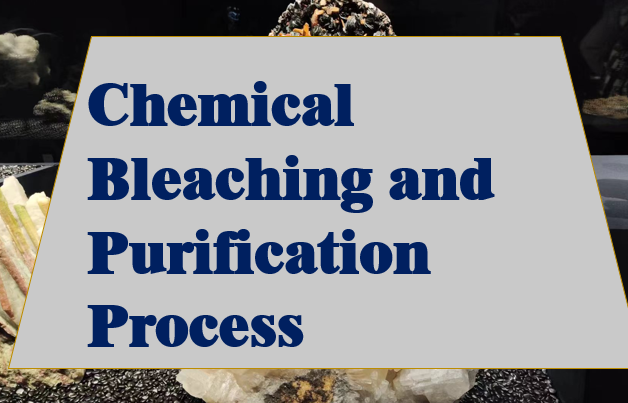Kaolin Chemical Bleaching and Purification Process
2025-02-06 Xinhai (1537)
2025-02-06 Xinhai (1537)
If you have any questions, please contact us through the following ways, we will give you more and better assistance!

Kaolin, as an important non-metallic mineral, is widely used in ceramics, papermaking, coatings, and other industries. However, trivalent iron ions and their oxides are the main coloring impurities that reduce the whiteness of kaolin. To remove these harmful impurities, the chemical bleaching method has been developed. The chemical bleaching method removes these impurities by converting them into soluble substances through the action of chemical reagents, thereby significantly improving the whiteness of kaolin. Below are the main methods of chemical bleaching and their applications.
The principle of oxidative bleaching is to oxidize the harmful coloring impurities in the reduced state into soluble substances, which are then removed. For example, pyrite is oxidized into soluble ferrous sulfate, and then organic matter is removed by washing with water. Common strong oxidizing agents include sodium hypochlorite, potassium permanganate, and hydrogen peroxide. During the process, it is necessary to strictly control the pH value of the system, as a high pH value can cause Fe²⁺ to be converted into insoluble Fe³⁺. In addition, factors such as temperature, reagent dosage, pulp concentration, and bleaching time have a significant impact on the bleaching effect and need to be determined through condition experiments.

The principle of reductive bleaching is to reduce the insoluble trivalent iron oxides into soluble ferrous salts, converting the harmful element iron into the soluble phase and dissolving it, and then removing it through a washing process. Common reductive bleaching agents include sodium dithionite (Na₂S₂O₄) and sulfurourea (HO₂SC(NH)NH₂). For example, Fe₂O₃ and sodium dithionite undergo the following reaction:
Fe2O3+Na2S2O4+H2SO4=Na2SO4+2FeSO4+H2O
This method also requires strict control of the pH value of the system. When the pH value is low, sodium dithionite is prone to decomposition; while a high pH value can enhance the reducing power of sodium dithionite, the reduced ferrous ions are prone to oxidation under high pH conditions and are oxidized back into insoluble trivalent iron. In addition, if the reaction time is too long, the freshly reduced ferrous ions will also be oxidized into trivalent iron ions, leading to a decrease in the whiteness of kaolin, a phenomenon known in industrial production as "yellowing back." Yu Ruimin et al. increased the whiteness of kaolin by 21.7% using the reductive method, indicating that the chemical bleaching method can significantly improve the whiteness of kaolin. It was also found that while bleaching reduced the Fe content, it did not significantly reduce the Al content.
To overcome the oxidation problem of Fe²⁺, the reductive-chelation method can be used. Chelating agents such as oxalic acid react with Fe²⁺ to form soluble [Fe(C₂O₄)₂・H₂O]²⁻, which then dissolves in water to achieve the removal purpose, while also avoiding the oxidation of Fe²⁺, achieving a better bleaching effect. Nie Xin used the reductive-chelation method to purify kaolin from ionic rare earth tailings. Under conditions of 50°C temperature, pH value of 3, and addition amounts of insurance powder and oxalic acid of 3% and 2.5% respectively, and 60 minutes of bleaching, the best bleaching effect was obtained, increasing the whiteness of kaolin by 14.8%.
The chemical bleaching method can significantly improve the whiteness of kaolin products, but its production cost is relatively high and is mainly used for further purification of kaolin concentrates that have been impurity-removed. The use of reagents such as sodium dithionite can produce acidic exhaust gas and wastewater, which have a significant impact on environmental pollution. Therefore, when using this method, it is necessary to comprehensively consider environmental protection issues and economic rationality. The future development trend should be to develop more cost-effective and pollution-free bleaching agents.
In summary, the chemical bleaching method is a key technology for improving the whiteness of kaolin. Through various methods such as oxidative, reductive, and reductive-chelation methods, harmful impurities can be effectively removed to improve the whiteness of kaolin. However, in the application of this method, it is necessary to strictly control process parameters to avoid "yellowing back" and environmental pollution problems. With the continuous progress of technology, it is expected that more environmentally friendly and economical bleaching agents will be developed in the future to promote the sustainable development of the kaolin industry.